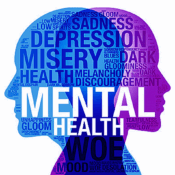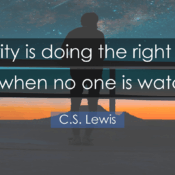
17 Frustrations Deaf and Hard of Hearing Individuals Experience In Healthcare Settings
In last month’s blog post, I shared my wife and I had a positive experience in accessing communication during her outpatient surgical procedure. While we had a positive experience, we know this is an exception, not the rule.
While unfortunate, a perfect example was one of the largest medical providers in the Chicagoland area denying my father sign language interpreters during multiple visits in the hospital while battling Multiple Myeloma, a cancer of the bone marrow. These denials of my father’s legal rights resulted in my father taking legal action.
There is no data compiled reflecting the total number of lawsuits regarding communication access in medical settings that have been decided or settled. However, the National Association of the Deaf (NAD) shared in their latest annual report that of the more than 1,300 intakes done, 18 percent, or approximately 250 are healthcare related. Furthermore, other organizations, including NorCal Services for the Deaf & Hard of Hearing, report receiving complaints on a weekly, if not daily, basis.
The National Association of the Deaf is not alone in litigating against healthcare providers on behalf of Deaf and Hard of Hearing individuals that have been denied appropriate auxiliary aids and services that would result in effective communication. The Department of Justice, as a part of its Barrier-Free Healthcare Initiative, is actively investigating and suing medical care providers to remedy wrongdoing. The list of organizations seeking legal recourse also includes the Department of Health and Human Services, as well as numerous not-for-profit and for-profit law-firms.
There is much to be done to ensure Deaf and Hard of Hearing individuals have positive experiences in accessing effective communication. To this end, I am listing 17 different frustrations Deaf and Hard of Hearing individuals face in healthcare settings, many of which I’ve experienced firsthand:
- Following-up, sometimes multiple times, with the medical providers to ensure your request for an interpreter is fulfilled (click here to view Amanda McDonough’s VLOG about experiences in the hospital).
- Despite emergent situations, medical providers will think it is wholly appropriate to delay medical care and services until an interpreter arrives, a connection is made with a remote interpreter via video remote interpreting (VRI) software, or captioning services is set up.
- Expect to be forced to use pen and paper as a means of communicating with the medical staff.
- Plan to be asked the age-old question of whether you can lip-read and respond by explaining lip-reading does not result in effective communication.
- Don’t expect to be able to make or receive calls while in the hospital. The hospital may not have the appropriate devices (e.g., laptop with tablet with Video Phone capabilities or Captioning Software) and/or a strong enough Wi-Fi signal to handle video calling.
- Expect to be provided antiquated devices to access relay services that are no longer commonly used (e.g., Telecommunications Device for the Deaf). While hospitals spend millions of dollars on the most up-to-date medical technologies, some do not commit additional monies to install a strong enough Wi-Fi signal for video calls, secure amplified/captioned telephones and purchase laptop(s) and tablets to enable video calling and remote captioning.
- Nurses and other professionals will forget that you cannot hear their response via the speaker after you use the call/alert button to request assistance (screaming often gets help to come immediately, but can contribute to high levels of tension).
- Hospital policies may require an interpreter to stay outside of the patient’s room when hospital providers are not present. If communication devices are not made available to allow the Deaf or Hard of Hearing patient to make phone calls or order food from the cafeteria, this could be a denial of a patient’s legal right to fully and equally enjoy and benefit from the goods, services, facilities, privileges, advantages, and accommodations of the facilities made available to the hospital.
- Anticipate there will be situations where you may not have communication access during critical encounters (e.g., doctor doing rounds, social worker stops by, etc.).
- Expect to be offered VRI as the primary and only solution to access sign language interpreting services.
- Anticipate receiving a confused response when sharing the VRI solution offered does not always result in effective communication (for more information, visit NAD’s position statement on Minimum Standards for VRI Services in Medical Settings).
- Anticipate struggles with VRI and/or watching medical providers struggle to set up VRI software because they don't know how to use it.
- Plan to continuously explain to medical providers the role of an interpreter (e.g., not a family friend), that family members cannot be relied on to interpret, that the term “hearing impaired” is not culturally acceptable, and providers need to take their masks off when talking because you cannot hear them well enough and/or you need to lip-read them.
- Plan to initiate dialogue about the use and storage of hearing aids, cochlear implants, glasses and other devices during procedures and evening hours.
- Prepare to ask for captions in public places and in hospital rooms to be turned on, as well as wait for someone who knows how to turn on the captioning to stop by and turn on the captioning.
- Expect the unexpected as hospital policies are continuously changing and medical providers are not sure what they can and cannot do regarding communication access (e.g., how to proceed with requesting a sign language interpreter).
- Anticipate difficult or extended conversations to review and receive medication, especially if an on-site interpreter or captionist is not present or is not familiar with the spelling of medication.
So what do you do with this?
I know some of you are thinking this is helpful information as it paints a picture of the frustrations Deaf and Hard of Hearing individuals have in healthcare settings.
My best suggestion is this – pick two or three areas to focus on and go deep. Review and revise your communication access policy and internal procedures. Invest in deaf awareness and cultural sensitivity training, as well as communication accessibility training.
And, lastly, don’t be afraid to challenge the preconceived notions of what effective communication is (and what it is not) at your hospital. Your Deaf and Hard of Hearing patients demand you do.
(Originally posted on LinkedIn).



